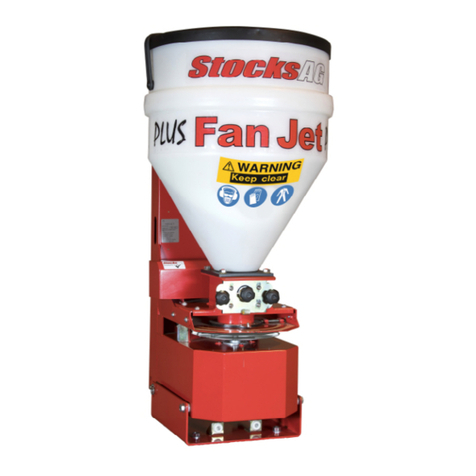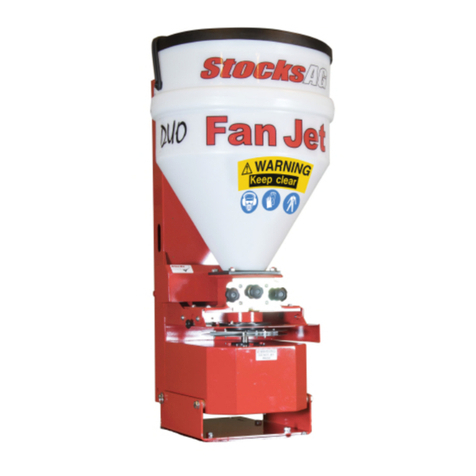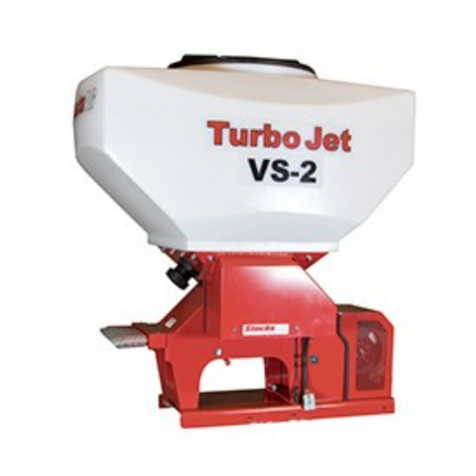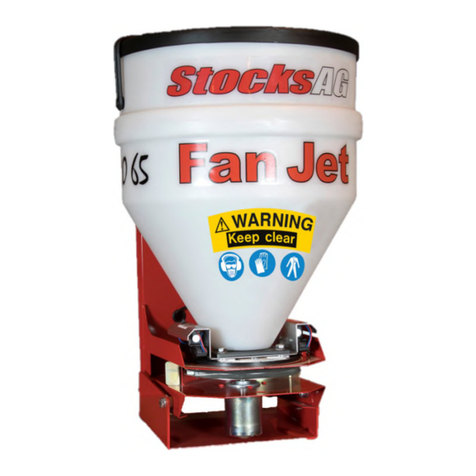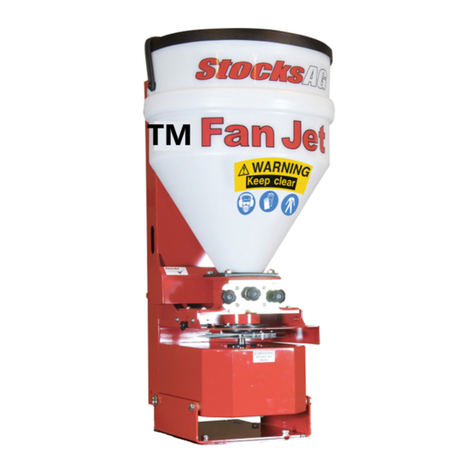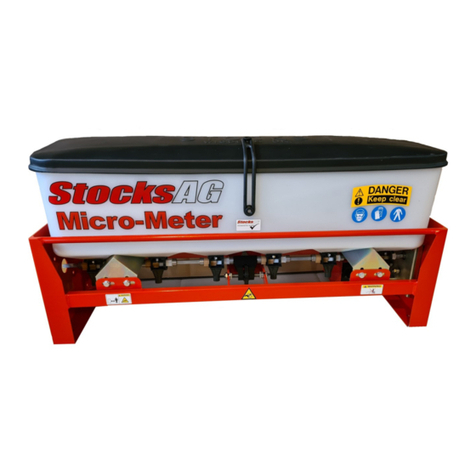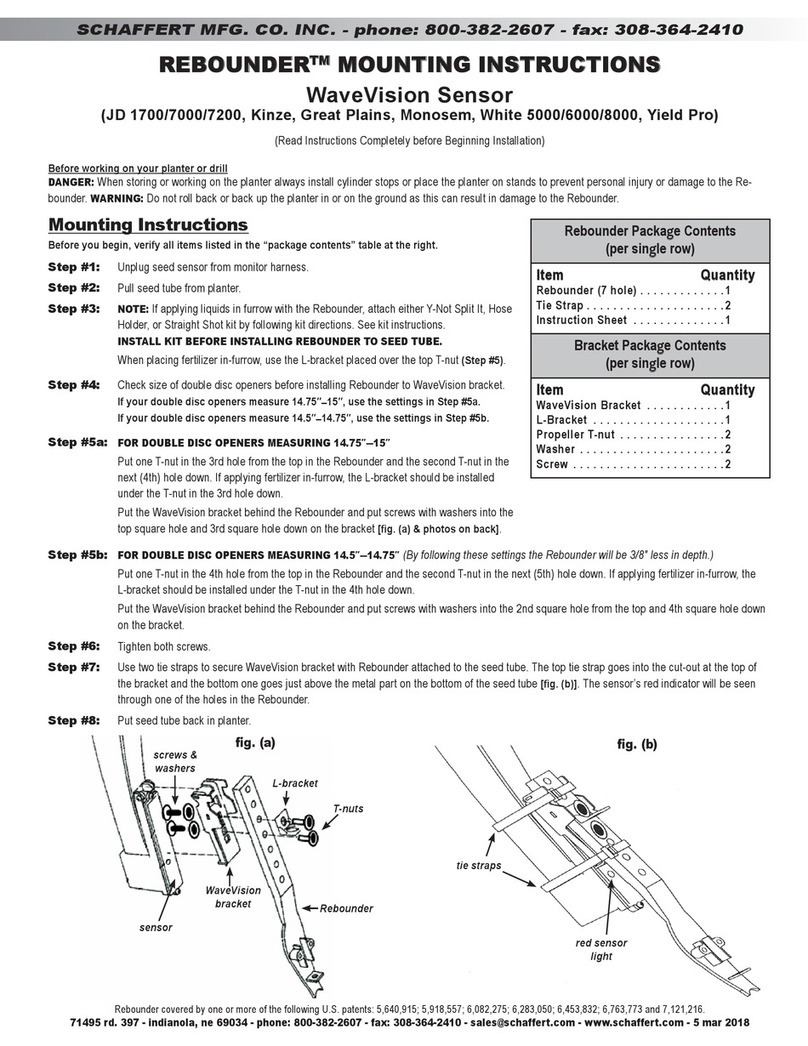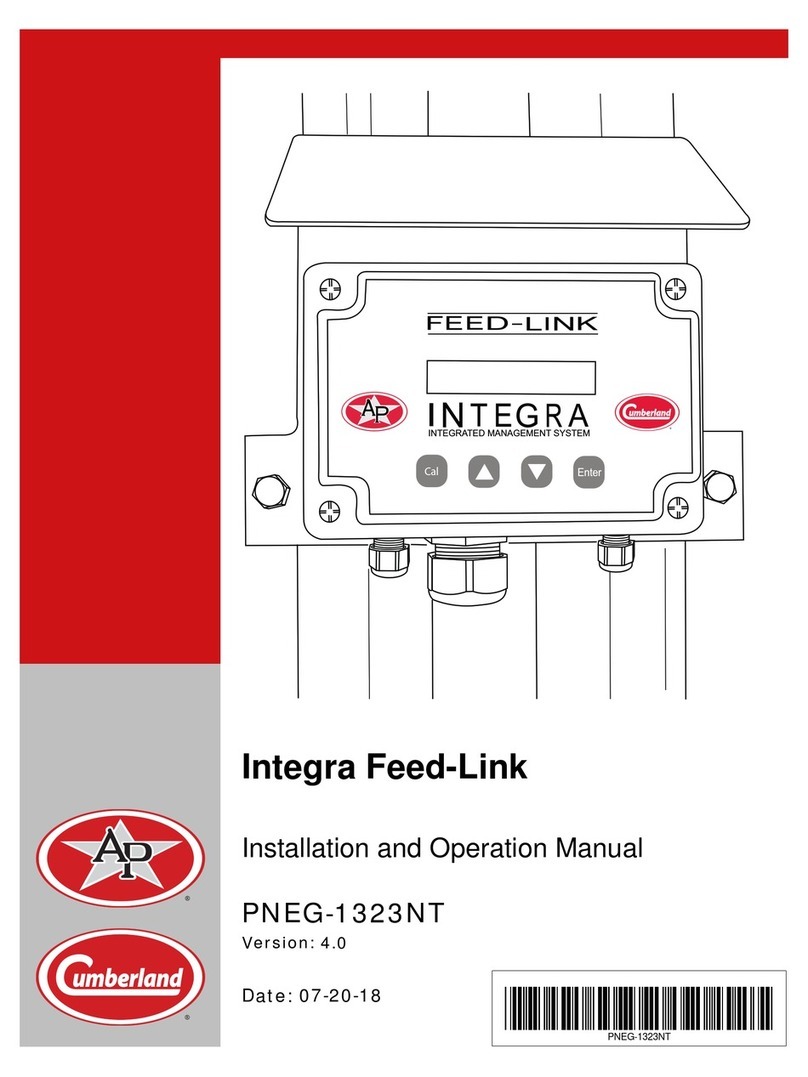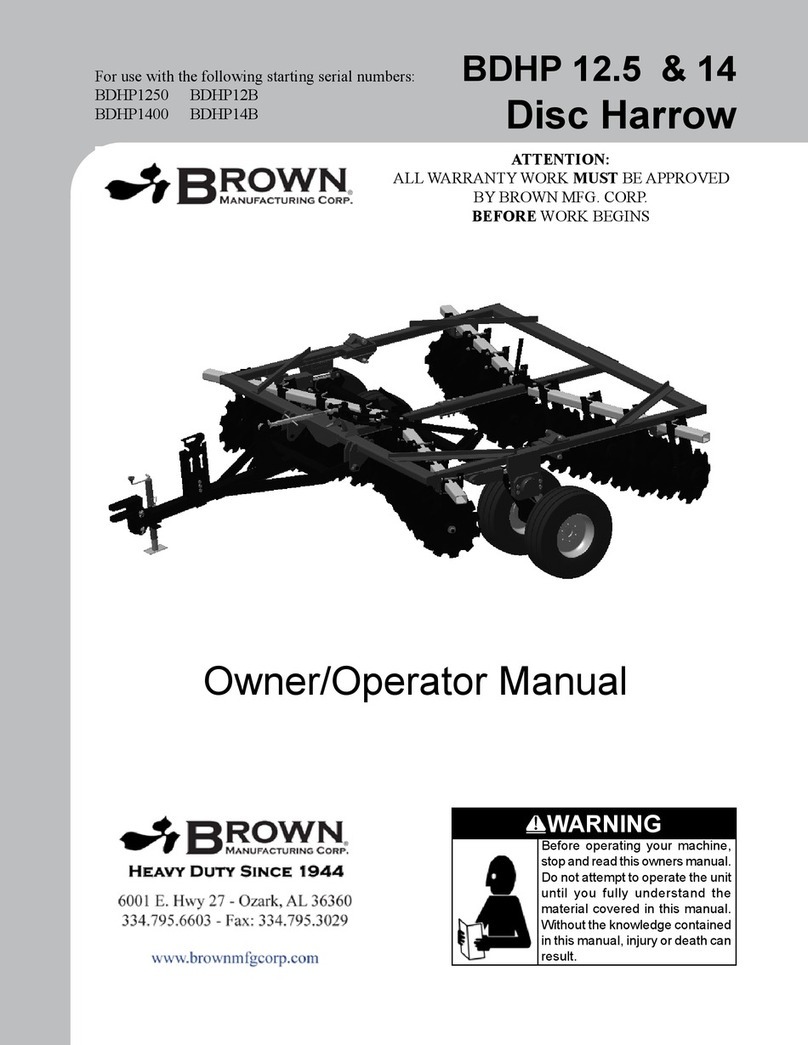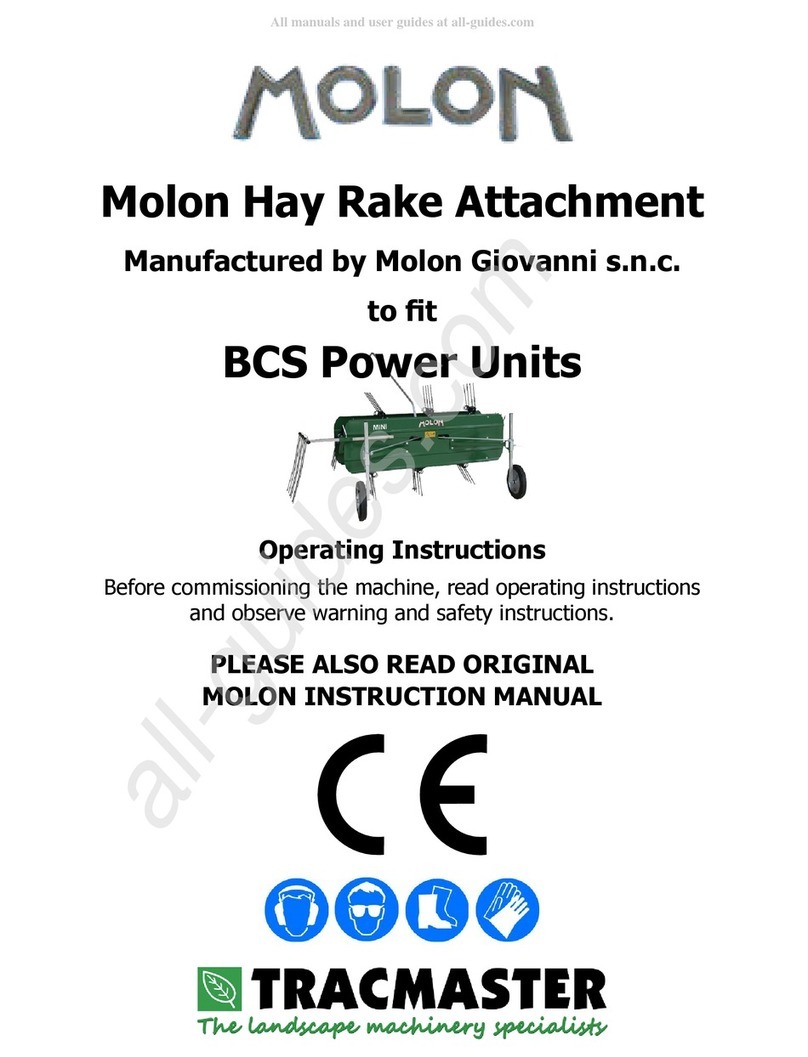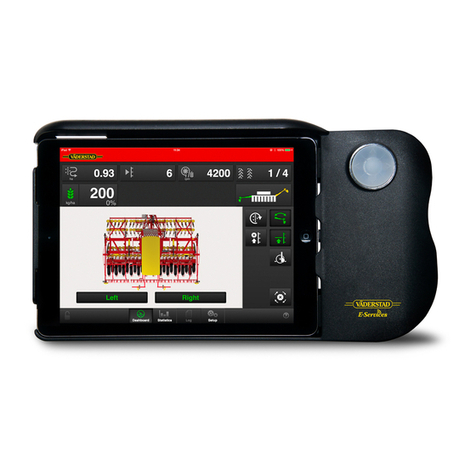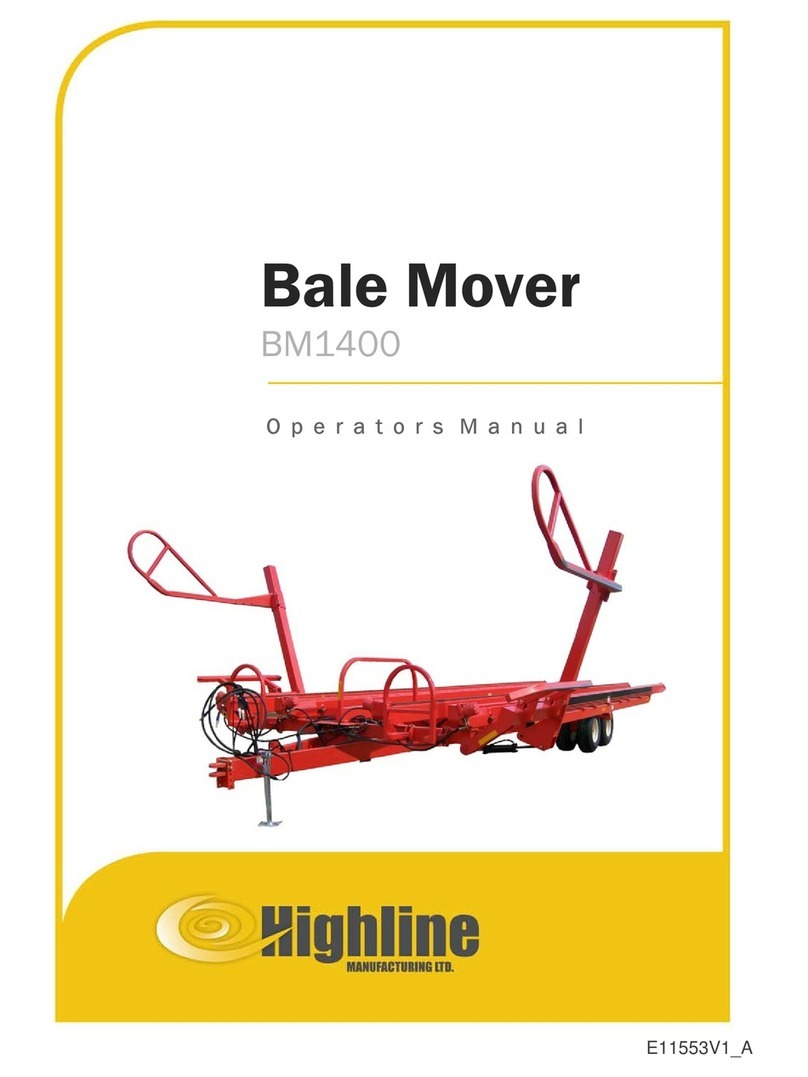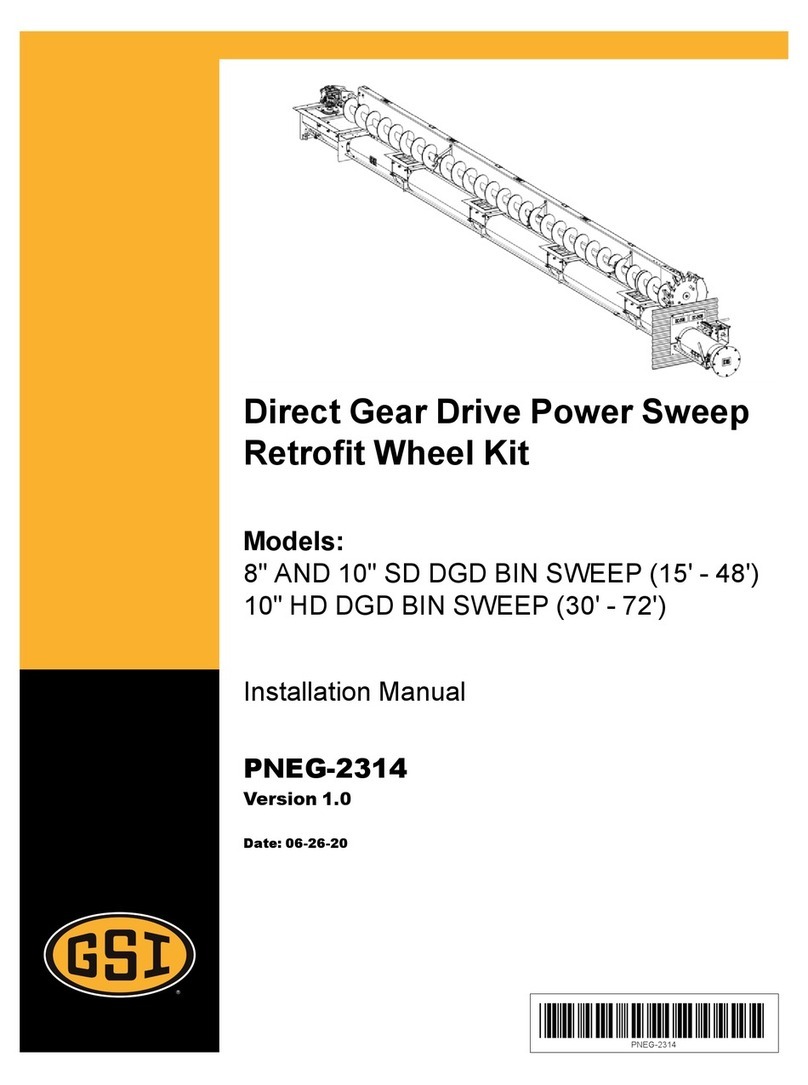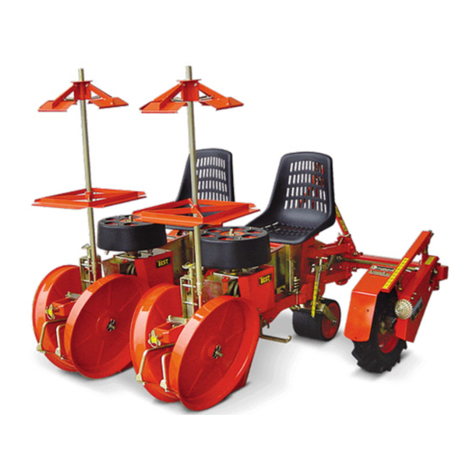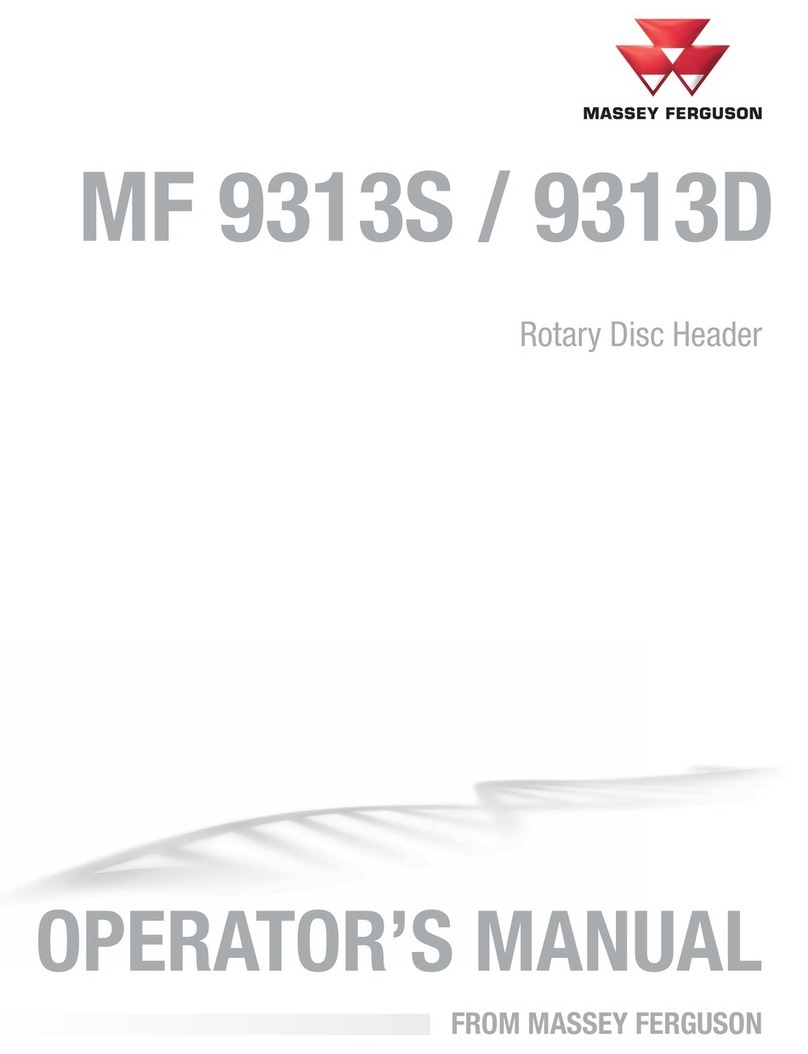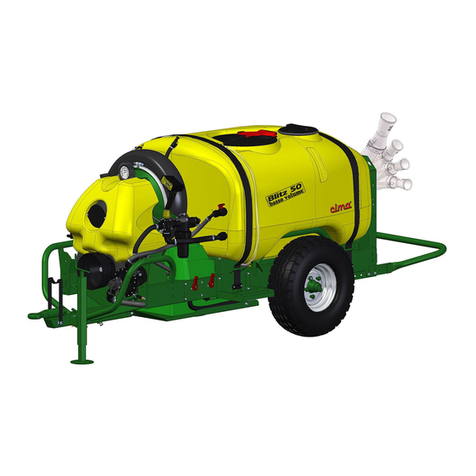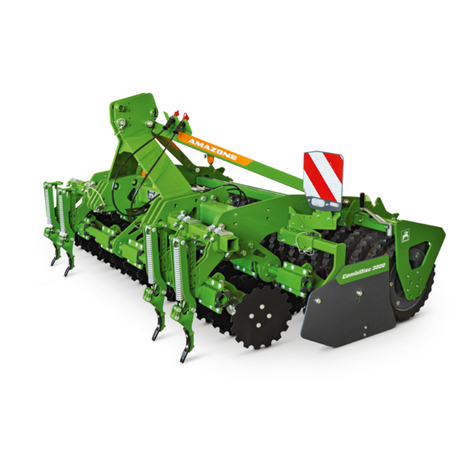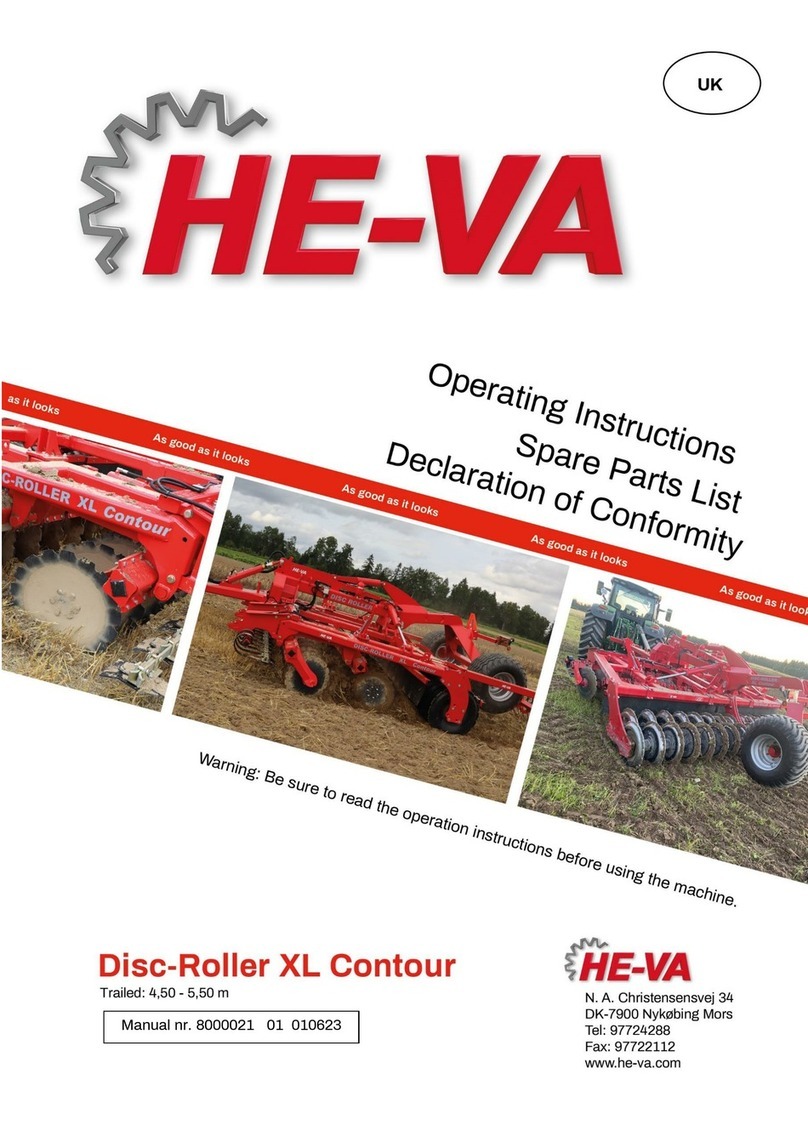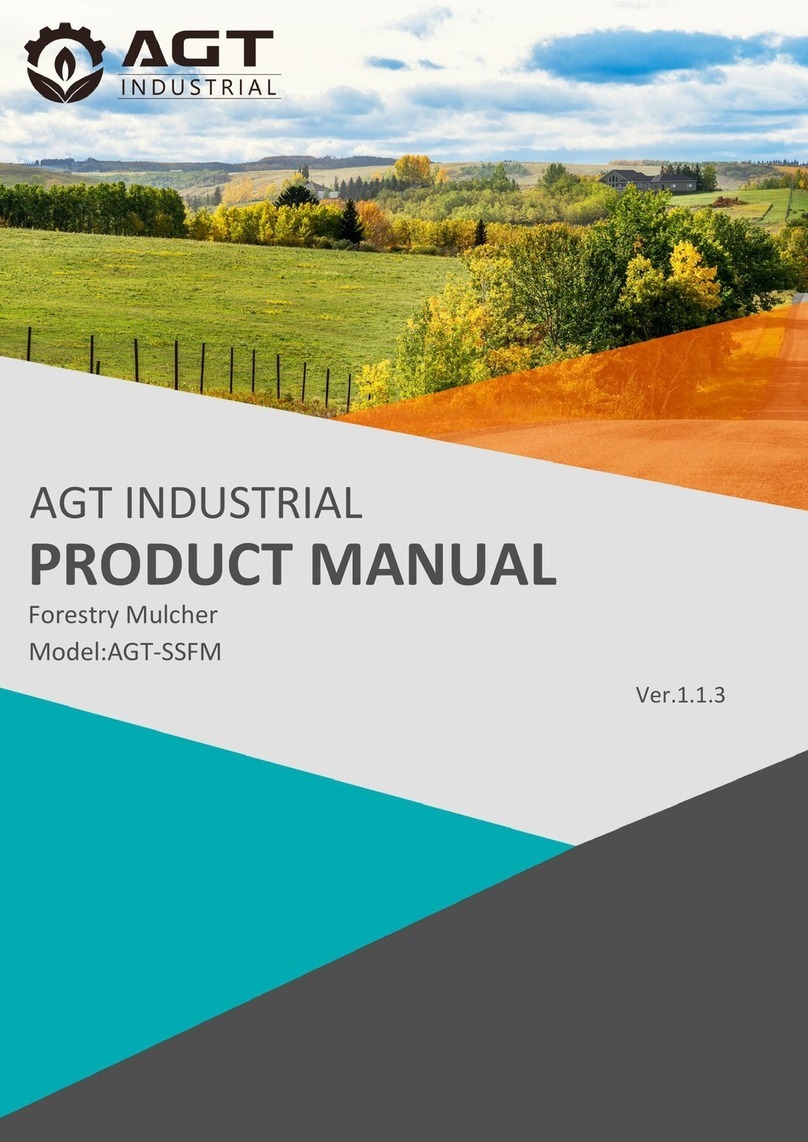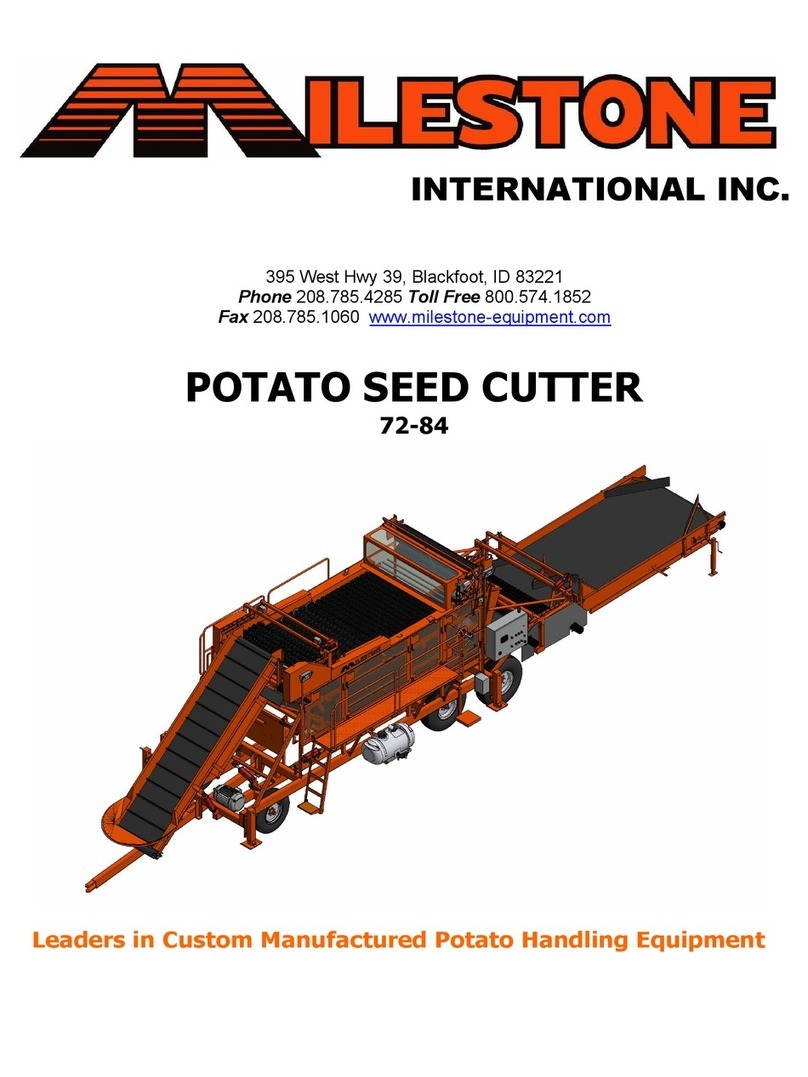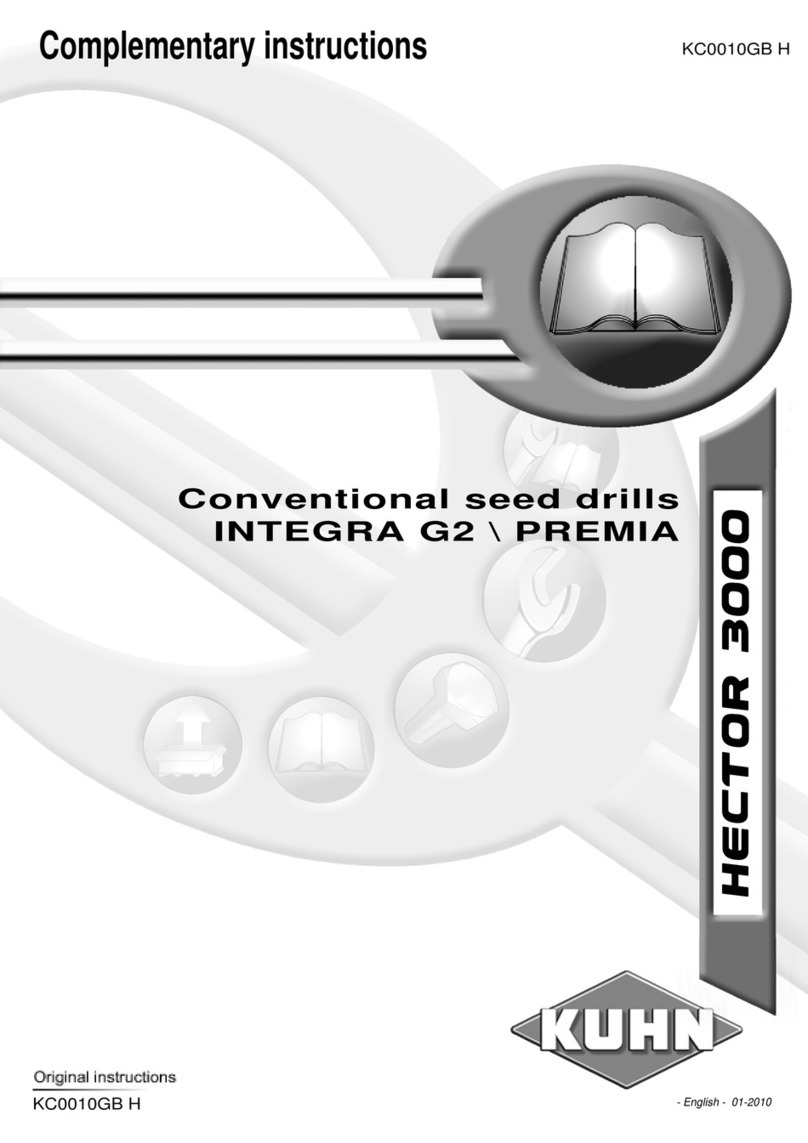
3
3 .1 General information
Congratulations on your Turbo Jet purchase;
Please check the machine for any transport damage upon receipt and advise your supplier of any problems
immediately. Late claims regarding any damage may be rejected.
IMPORTANT
This Operating Manual forms part of the machine and must be readily available for the operator who
must read and follow the points covered before use
3 .2 Technical data
Model: Turbo Jet 8 i-CON and Turbo Jet 10 i-CON
Hopper capacity: 240 litre or 400 litre
240 litre machine: Net weight: 90kg with Spreader Kit 120kg Dimensions (W x D x H) 66 x 100 x 116cm
400 litre machine: Net weight: 95kg with Spreader Kit 130kg Dimensions (W x D x H) 66 x 100 x 143cm
Max. spreading width: Turbo Jet 8: 8m Turbo Jet 10: 10m
Recommended working width: Turbo Jet 8: 3-8m Turbo Jet 10: 3-10m depending on the application
Operating Voltage 12v; Power requirement 30 amps Motor output: 360 watt
Power consumption of the motor: 35 amps when starting, up to 30 amps during normal operation
Noise level : 70 dB
3.3 Intended use
This 12v applicator has been designed solely to apply small seed and granular products for use in the
agricultural, horticulture and the amenity sector.
Any other use is considered to be non-intended and the manufacturer will not be liable for any resulting
damage. The operator alone bears the associated risk if used for non-intended use.
Intended use also includes compliance with the conditions for operation, maintenance, and repairs.
The implement may only be used, maintained and repaired by persons who have relevant experience and
aware of the risks involved.
The manufacturer is not liable for any resulting damage if the machine is used for any other purpose than the
intended use also includes compliance with the conditions for operation, maintenance, and repairs prescribed
within this instruction manual .
This machine should not be used in the rain or during a thunderstorm.
The applicable accident prevention regulations as well as the other generally safety-related, occupational health
and road traffic regulations must also be observed.
Specifications descriptions and illustrations in this manual are accurate at the time of this publication but may
be subject to change this manual are correct at the time of printing but we reserve the right to change and
improve them. This machine is designed with safety in mind.
Maintenance and servicing in accordance with this manual will ensure safe operation and reliability of your
machine for many years
This machine is not designed to apply abrasive materials such as sand & grit or for applying salt products.
NOTE It is the responsibility of the operator to ensure the appropriate personal protection
equipment be worn for the material being applied. If unsure contact the material supplier for more
information.
Please contact us if you still have questions regarding the machine operation before use
Stocks AG Ltd , Cromwell Road, Wisbech, Cambridgeshire UK
Tel: 00 44 (0) 1945 464 909 email: sales@stocks-ag.co.uk
